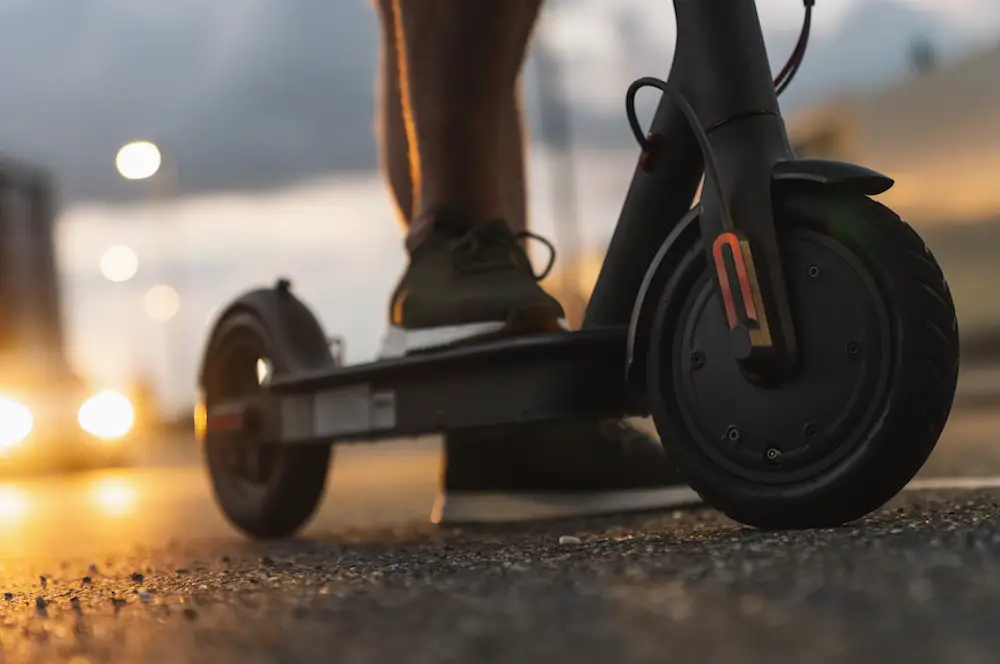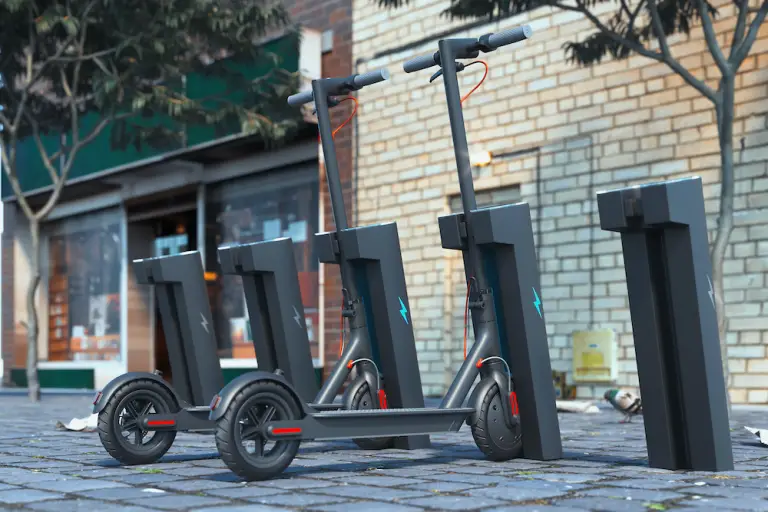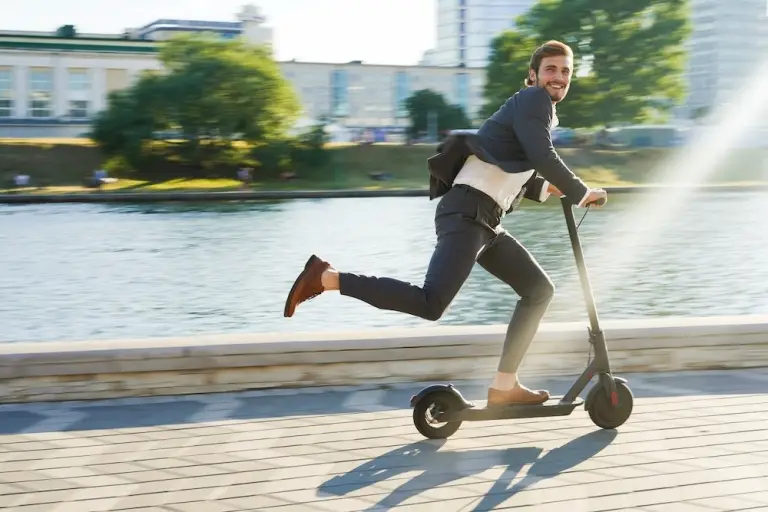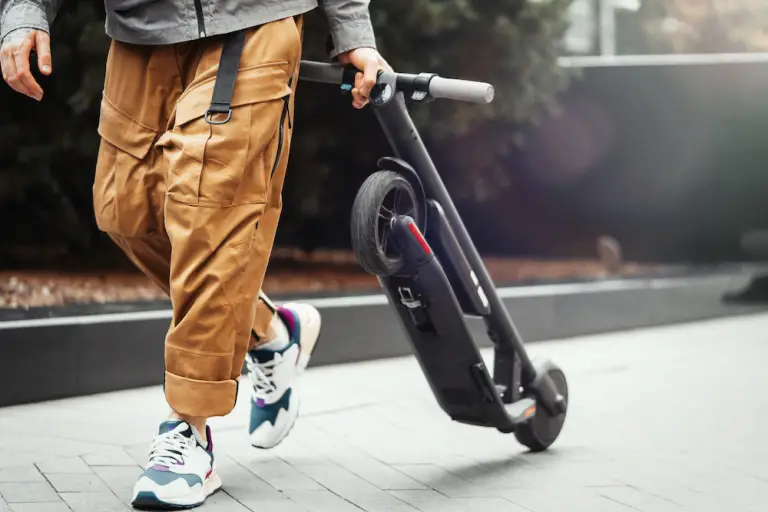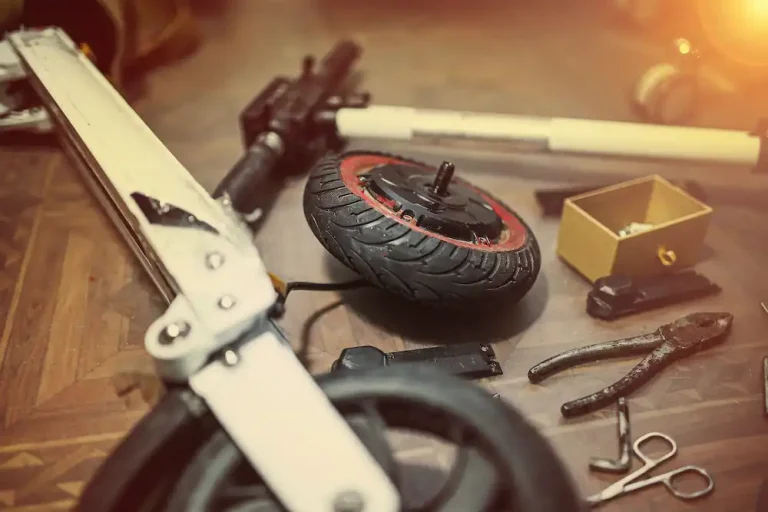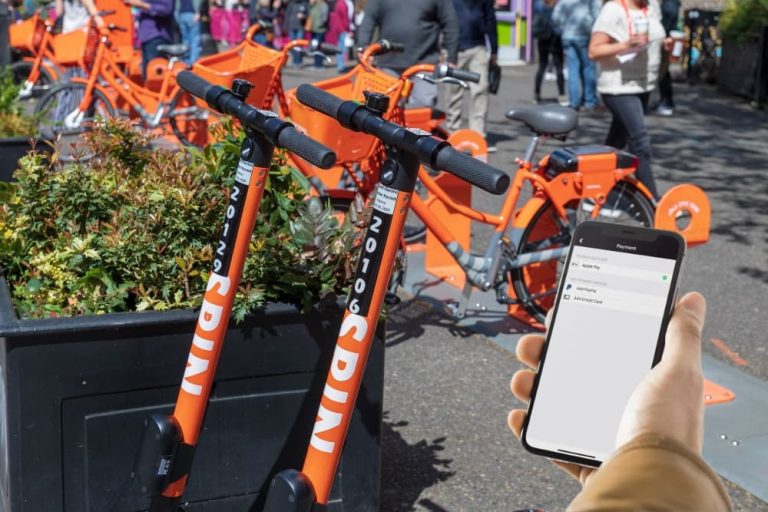How Do Electric Scooters Work?
How do electric scooters work? This is a prevalent question, especially in metropolitan areas. As one of the most efficient and convenient ways to get from point A to B, these devices are booming in popularity.
In fact, with far less of a carbon footprint as cars and a much lower price tag, you might be in the market for one yourself.
Understanding how scooters work can help you troubleshoot problems with your unit or help you buy your first one. It’s also a great way to get started on any legal modifications, such as improving the scooter’s aerodynamics.
Basic Parts of an Electric Scooter
Before we get into the highly expansive and rather fancy aspects of scooters, we have to start with the basics. These parts are responsible for making the unit operate at specific speeds for the most efficient travel possible.
More than that, they are also some of the first parts you’ll look at if you want to make any modifications.
Power Components
Batteries
Compared to gas scooters, the batteries on your electric model are the fuel source. Not only are they a cleaner source of fuel, but they’re also quite reliable. Most often, scooters will feature lithium-ion batteries, which are frequently lauded for their ability to retain a lot of power.
The primary downside to batteries is that they can take quite a while to charge, depending on their capacity. Some scooters can take as little as three hours to achieve a full charge, while others can take upwards of eight hours. They are the powerhouse of your scooter as they are responsible for everything, from brake lights to the electric motor.
It’s also common to find lead-acid batteries in scooters, especially if they are less expensive or “kid-friendly” versions. Lead-acid may be preferable in these models as they don’t have to achieve high speeds and require a limited amount of power for operation.
Batteries are always rated in watt-hours, and their capacity is the most important thing to look out for. The higher the size, the longer the batteries will last on a full charge. For example, an electric scooter with 250 wH will last much less than one with 3000 wH.
Motor
The second most important part of your scooter is the motor, which could also be considered the powerhouse of the whole unit. The motor is a built-in component that determines how power is consumed by your scooter.
You’ll find motors are typically rated in terms of wattage. A higher watt electric scooter will have more power to take advantage of, which can translate to faster speeds.
You’ll also find that high-powered motors can carry heavier weights and have superior performance when traveling uphill. On average, scooters can have anywhere from 500- to 1000-watt motors, especially the more affordable brands.
A high-quality motor, on the other hand, can reach up to 8000 watts, depending on the manufacturer. These electric scooters are also going to cost substantially more, sometimes as much as $3000.
Controller
You’ll find the controller is one of the most exciting parts of an electric scooter because it determines how fast the unit will be able to go. This part is also responsible for monitoring acceleration and brake controls.
When you remove the controller from your scooter, you’ll see it looks like a mid-size metal box with wires harnessed to it. When your scooter is on, and you accelerate, the controller will send a message to your motor to tell it how hard to work to achieve the best speed.
They require a steady voltage and current to regulate the speed of your scooter. This process means that models with high-voltage ratings are going to have far faster speeds than those with lower current settings.
Controllers aren’t typically discussed in the product descriptions for scooters because they are a quiet component, but they are incredibly essential. Without controllers, you won’t be able to moderate your speeds or limit how hard your batteries and motor will work. This reason is also why some modified scooters burn out, as the controller cannot adapt to the changes riders make.
Physical Components
Deck
Some parts of an electric scooter are very similar to skateboards, especially when it comes to the deck. This part is where your feet will be placed while the device is in operation. Some are wider than others, which can be more comfortable for first-time users to have.
For safety, most decks are equipped with anti-slip tread on the surface that helps your feet to adhere to the otherwise flat surface. This part is essential for riding in wet weather, as you won’t want to slip off your scooter while riding. You may also find that you might need to add additional grip tape for an even more stable ride.
Depending on the scooter model you choose, your deck may also come with the ability to attach a seat. So, instead of standing every time you ride your scooter, you can quickly install or detach a seat at your convenience. Typically, there will be bolts included with your device if this is the case.
Handlebars
Similar to bikes, your electric scooter is bound to have handlebars as they are what will control where you’re heading with the device. On the handlebars, you are likely to find the essential controls for your scooter. These controls may include your gears, accelerator, and brakes.
Some of the more technologically-advanced models will also have a display for your settings and your speeds. At times, there may be an additional screen mounted to the handlebars, as well as a space for your smartphone or GPS device. You might also be able to find models with a basket on the handlebars for carrying extra items, such as groceries.
The most important thing to look out for with handlebars is an ergonomic grip, as you won’t want cramping or fatigue halfway through your ride. You’ll also want to make sure they have anti-slip grips, so you can have full control over the scooter in hot or wet conditions.
Many riders have also expressed the convenience of foldable handlebars. In most cases, your scooter should be able to fold down when it is time to store it away. Your handlebars should be able to either be removed or folded, as well, so you can easily transport the device.
Tires
The tires on your scooter are going to experience the brunt of your rides, so you’ll surely want to make sure they are in tip-top condition. Also, you’ll want to choose a scooter that features all-terrain tires so that you can navigate on roads, sidewalks, and off-road pathways.
The vast majority of electric devices boast pneumatic tires, which are airless. Over time, your pneumatic tires aren’t going to lose their integrity, which means your scooter will always be ready to ride. They are typically available in solid, polymer-filled, or honeycomb varieties.
Another advantage of pneumatic tires is their ride quality, as they are substantially smoother and better at absorbing shock. There are multiple things, aside from ride quality, that your tires are responsible for. They can impact the total amount of distance your scooter can travel, the terrain you can ride on, and the weather you can ride in.
Bare street tires aren’t going to be useful on dirt paths or rainy days, especially compared to all-terrain wheels, which are great for their traction.
Suspension
Another essential component that has a lot to do with the comfort you get from riding your scooter is its suspension system. This part is solely responsible for limiting the blowback you feel from traveling over uneven and bumpy terrain.
Most devices are available with rubber, hydraulic, or spring suspension systems. You might also find some scooters will opt not to include a suspension system and install larger pneumatic tires instead.
Ideally, you’re going to want a device with both, as it will offer optimal smoothness while riding. However, larger tires can sometimes be more beneficial than cheap suspension systems.
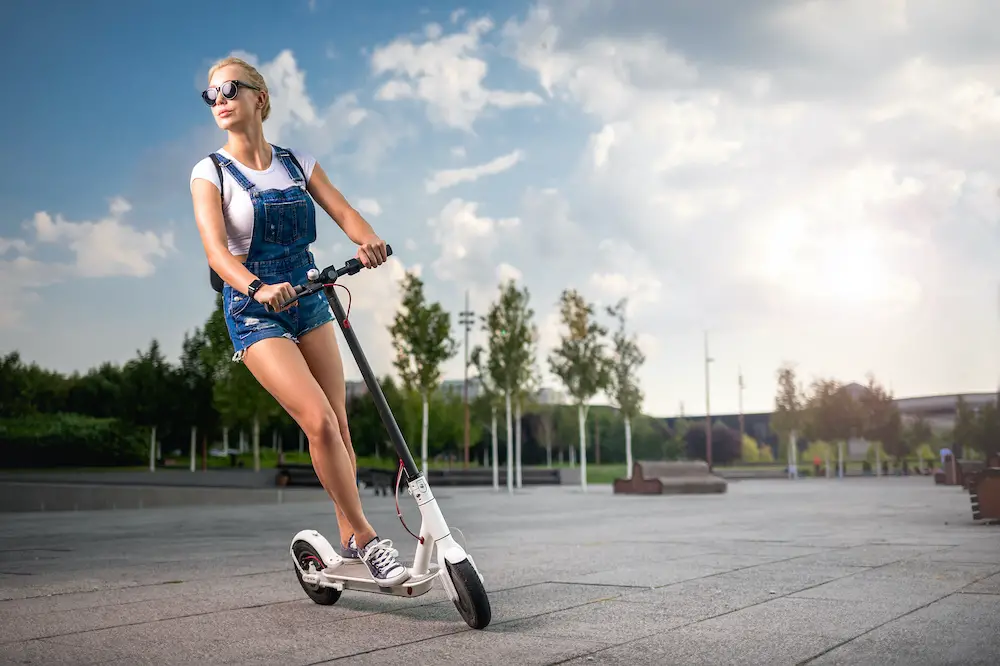
Added Features
Lights
Lights can come in a variety of types, whether it’s headlights, brake lights, or even indicator lights. Choosing a scooter’s lights will depend on where you intend to use it, as you might not need indicators if you’re riding the device in your backyard.
Road-safe scooters, on the other hand, should have all three. Unfortunately, not every manufacturer provides lights with their scooters, but they are easy enough to attach on your own.
You can typically either hardwire the lights yourself or opt for battery-operated versions, though they can be more costly. Overall, for your safety, it’s essential that you, at least, have headlights and brake lights to put to good use.
Kickstands
When you’re not riding your scooter, you’re going to want to stow it without having to lie it on its side. This point is where the kickstand comes into play, as it allows you to store your scooter upright.
You’re going to want to opt for a model that has a high-quality kickstand that isn’t likely to fail with regular wear and tear.
Alternatively, you could fold your scooter down and carry it with you, as most models are highly portable. However, having a kickstand is unmatched in terms of convenience.
Anti-Theft
Scooters are likely one of the most natural methods of transportation to steal, especially without anti-theft features. Some of the higher-end models will come with a remote that allows you to engage an alarm to prevent theft. This feature is particularly important for someone who parks their scooter outdoors.
You may also want to consider investing in locks that will prevent thieves from getting their hands on your valuables. If your device doesn’t come equipped with anti-theft features, you can also install them on your own with aftermarket products.
Waterproofing
It’s relatively impossible to predict the weather, especially as professional meteorologists frequently get it wrong.
There’s nothing worse than heading to work in the morning only to have to wait for a rain shower to end. Waterproofing is one of the most invaluable features that your scooter needs to have.
Most scooters aren’t equipped with waterproof features that allow you to throw it into a large body of water without damage. However, most are perfectly fine to ride around in moderate to heavy rainstorms.
For situations where you might get caught in unexpected weather, you’ll want to have some type of water-resistance.
How Do Electric Scooters Work?
Now that you have a clear idea of all of the most important parts of an electric scooter, let’s get into how the parts work together to make your scooter work.
It’s a very complicated process, but thanks to high-quality manufacturing and intelligent machinery, all you have to do to start riding is to turn your scooter on.
Step 1: Charging
The very first thing that needs to happen is for the battery to get charged. Upon the arrival of your scooter, the battery will probably be empty, and it should be full before being ridden.
Usually, with the help of a USB charger, you can connect the charger to power and then to your scooter to begin filling the battery. Depending on the total capacity of the battery, this process can take anywhere from three to eight hours.
Step 2: Powering On
Once the scooter has a full charge, you will then want to power the device on by engaging the power function. When this occurs, the batteries will turn on and push power to all of the essential components.
Step 3: Riding the Scooter
When you’re riding your electric scooter, your motor will be engaged, as well as the batteries and the controller. The controller will be moderating the amount of power given to the motor, which will adjust the speed of the scooter as necessary. Your batteries will be powering both components, as well as your braking system and lights.
Step 4: Powering Off
After your ride has finished, it’s time to turn off the power to the scooter and resume the charging process.
If you have a push-start scooter, you simply engage the same switch to cut power to the batteries. This process, in turn, will shut off the controller and the motor, allowing all of the parts to cool down.
You will then want to connect the scooter to its USB charger again to allow the battery to reach its full capacity. Once complete, you can continue riding your device with its highest possible efficiency.
Final Thoughts
Knowing all of the parts inside of your scooter can give you a clear way to answer how do electric scooters work. Even though it seems simple to us as the end-user, there is a lot of advanced technology that goes into these highly portable methods of transportation.
From the controller to extra grip on your handlebars, all of the unique parts are required for safe operation.

